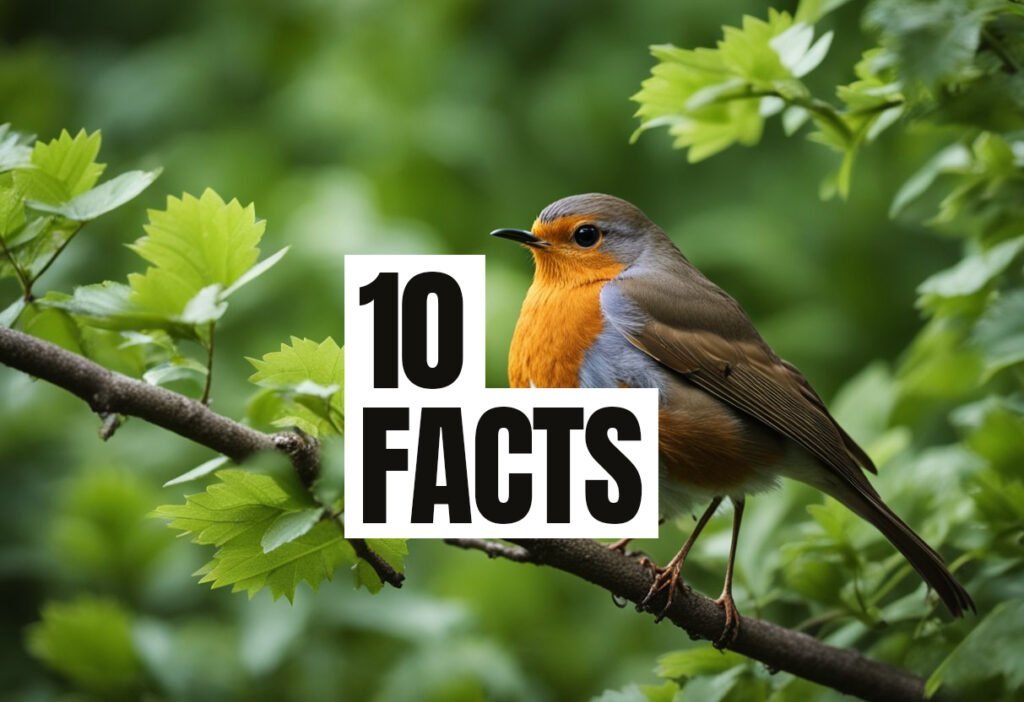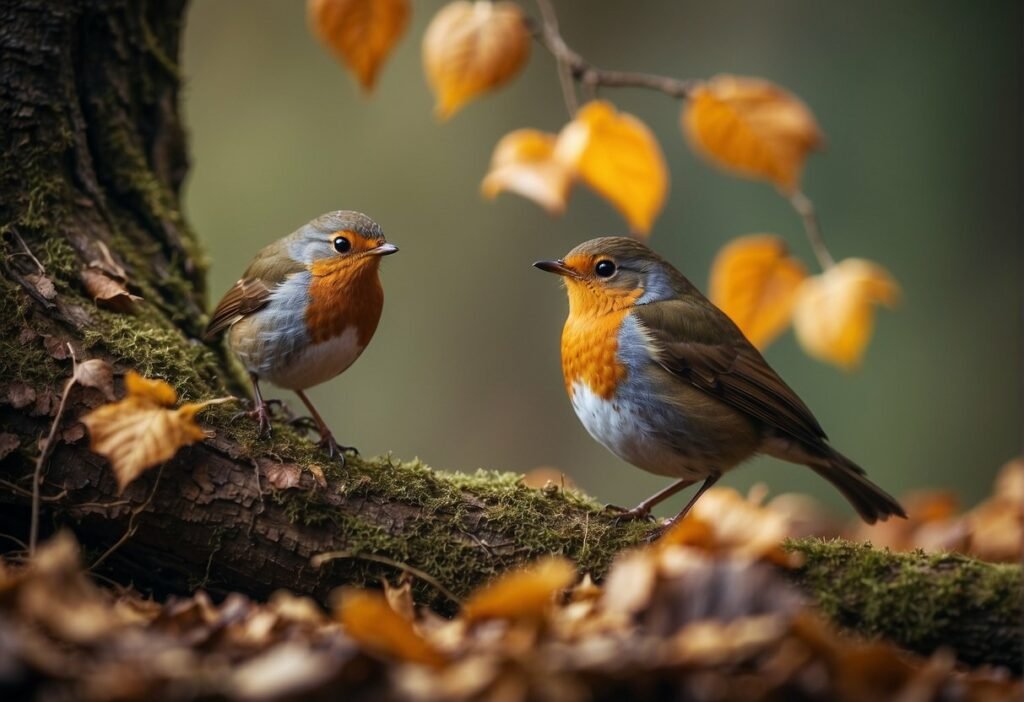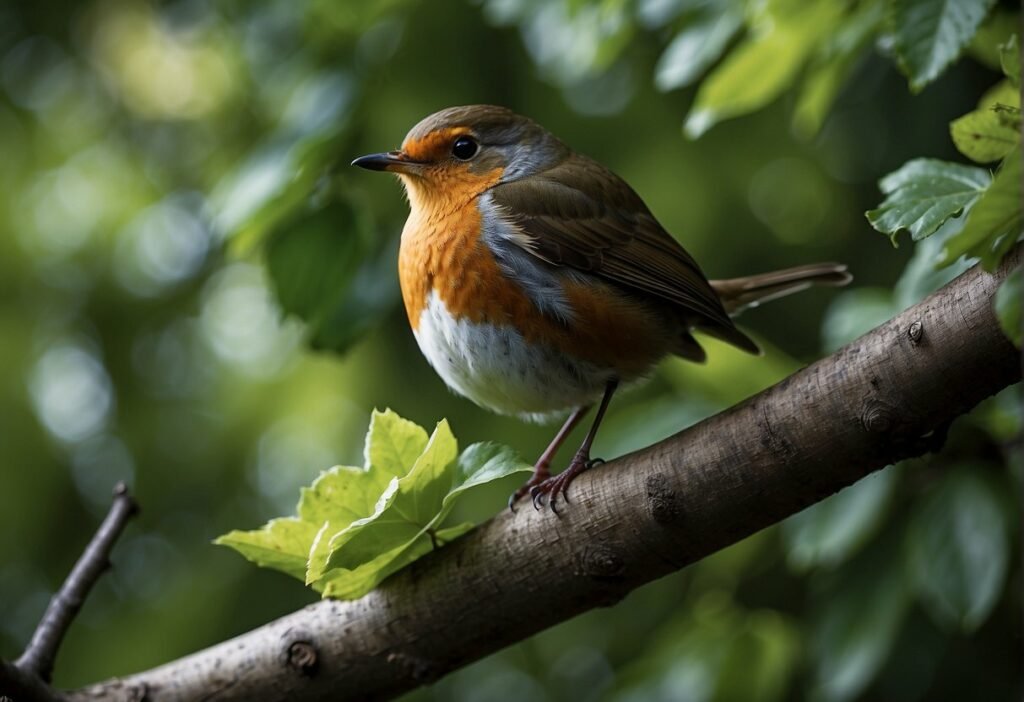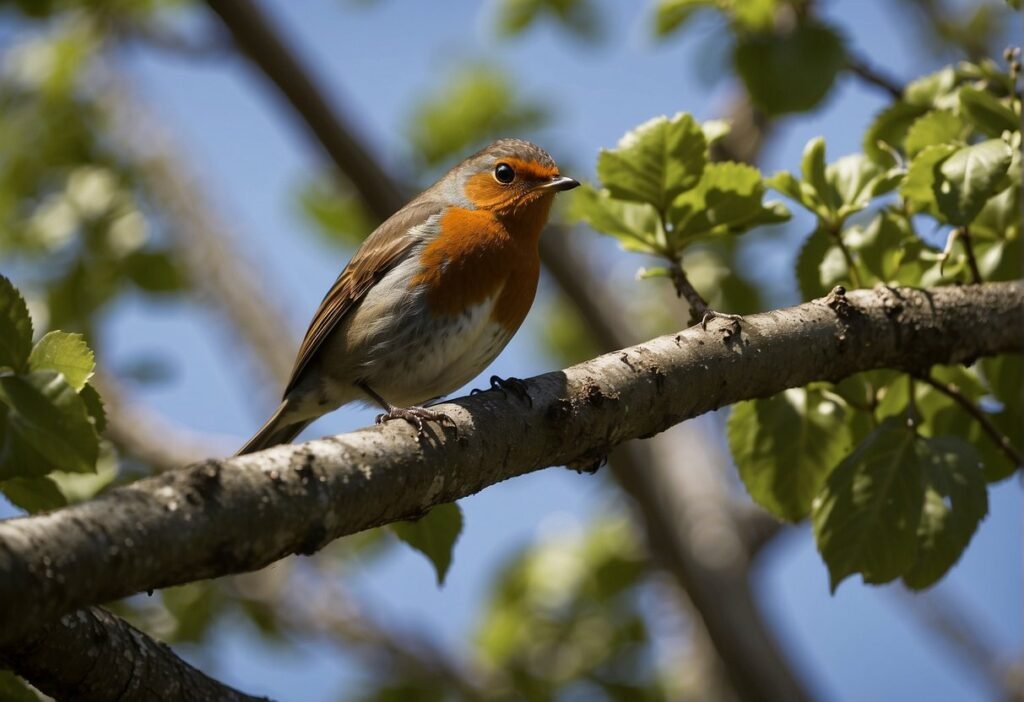Robins are a common sight in many gardens and parks, with their distinctive red breast and sweet song. However, despite their popularity, robins face a number of threats in the wild. One of the most significant of these threats comes from predators.

There are a number of predators that pose a threat to robins. These include birds of prey such as hawks and owls, as well as mammals such as foxes and cats. Snakes and larger insects such as praying mantises can also prey on robins, particularly young birds.
Conservation efforts have been put in place to help protect robins and their habitats. The destruction of woodland and hedgerows, which are important habitats for robins, has been a particular concern. Efforts are being made to preserve and restore these habitats, as well as to reduce the use of pesticides and other chemicals that can harm robins and their prey. By addressing these threats, it is hoped that the robin population can be protected for future generations to enjoy.
Threats to Robins in Different Habitats
Robins are a common bird species found across North America. They are known for their bright red breast and melodious song. However, they are also vulnerable to predation from a variety of different predators. The threats that robins face can vary depending on the habitat they inhabit. This section will explore the different threats robins face in urban and suburban environments as well as in forest and rural areas.
Urban and Suburban Threats
Robins that live in urban and suburban areas face a variety of threats that are not present in more natural environments. One of the biggest threats to robins in these areas is predation by domestic cats. Cats are known to kill birds and can pose a serious threat to robin populations. Another threat to robins in urban and suburban environments is collisions with windows. Many birds die each year from flying into windows, and robins are no exception. Finally, the use of pesticides in these areas can also be harmful to robins. Pesticides can poison the insects that robins rely on for food, making it difficult for them to survive.
Forest and Rural Threats
Robins that live in forest and rural areas face different threats than those in urban and suburban environments. One of the biggest threats to robins in these areas is predation by hawks and owls. These birds of prey are natural predators of robins and can pose a serious threat to their populations. Another threat to robins in forest and rural areas is predation by snakes and raccoons. These animals are known to raid robin nests and eat eggs and chicks. Finally, habitat loss due to agricultural practices can also be a threat to robins in these areas. As forests are cleared for farming, robins lose their natural habitat and may struggle to find suitable nesting sites.
In conclusion, robins face a variety of threats in different habitats. Understanding these threats is important for developing conservation strategies to protect these beloved birds.
Robins’ Defensive Strategies and Survival
Nesting and Reproduction
Robins are known for their unique nesting habits, which provide some defense against predators. The female robin builds a cup-shaped nest out of grass, twigs, and mud, which is lined with soft materials such as feathers, hair, or moss. The nest is typically located in a tree or shrub, and the female robin lays a clutch of 3-5 blue or greenish-blue eggs. The eggs are camouflaged with speckles and blotches, making them difficult for predators to spot.
During the breeding season, the male robin helps defend the nest and young. He will often perch on a high branch and sing loudly to establish his territory and warn off potential predators. The female robin also plays a role in defending the nest, using her sharp beak to fend off intruders.
Behavioral Adaptations
Robins have developed several behavioral adaptations to help them survive in the face of predators. One of their most effective defenses is their warning call, which alerts other robins in the area to the presence of a predator. The call is a series of rapid, high-pitched notes that can be heard up to 100 yards away.
In addition to their warning call, robins also use mobbing behavior to drive away predators. When a predator is spotted, nearby robins will gather together and swoop down on the predator, making loud alarm calls and even attacking it with their beaks.
Robins also use camouflage to help them blend in with their surroundings. The brownish-red color of their feathers allows them to blend in with the ground and foliage, making them less visible to predators.
Overall, robins have developed a range of defensive strategies to help them survive in the face of predators. From their unique nesting habits to their warning calls and mobbing behavior, these adaptations allow robins to thrive in a variety of environments.
Frequently Asked Questions
Which animals are known to prey on robins?
Several animals are known to prey on robins, including domestic cats, hawks, falcons, snakes, and raccoons. These predators can pose a serious threat to robins, especially during nesting season.
How do robins defend themselves against predators?
Robins have several defense mechanisms to protect themselves from predators. They use their sharp beaks to peck at predators, and they can also fly away quickly to escape danger. Additionally, robins are known to form alarm calls to alert other birds in the area of potential danger.
What threats do robins face during the winter months?
During the winter months, robins face threats such as harsh weather conditions, food scarcity, and predators. Some robins migrate to warmer climates during the winter to avoid these threats, while others stay in their habitats and rely on food sources such as berries and insects.
Are owls a common threat to robins?
Owls are known to prey on robins, especially at night when robins are more vulnerable. However, the extent to which owls pose a threat to robins varies depending on the region and the specific owl species present.
How do predators impact robin nest safety?
Predators can have a significant impact on robin nest safety. Nesting robins are particularly vulnerable to predators, and if a predator discovers a nest, it can quickly destroy it and harm the eggs or chicks inside.
What environmental factors contribute to the predation of robins?
Several environmental factors can contribute to the predation of robins, including habitat loss, climate change, and human activity. As natural habitats are destroyed or altered, predators may be forced to seek out new food sources, including robins. Additionally, climate change can impact the availability of food for robins, making them more vulnerable to predators.




